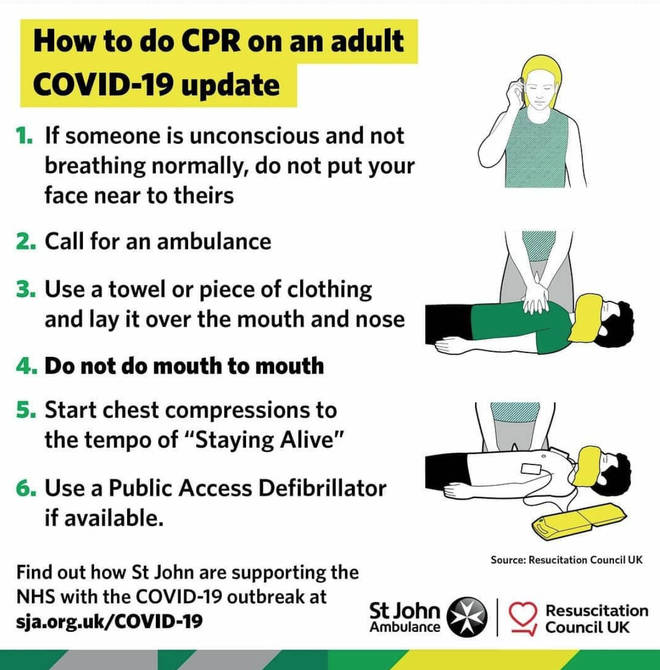Special precautions should be taken when resuscitating people in cardiac arrest with known or suspected COVID-19 coronavirus, according to guidance from the American Heart Association (AHA). The good news is you can learn CPR online, which could help save the life of a family member.
The interim guidance, drawn mostly from CDC recommendations, focused on procedures that generate aerosols — such as CPR, endotracheal intubation, and non-invasive ventilation — and thus pose an extra risk for transmitting the virus that causes COVID-19.
Guide for Prehospital Care
“When COVID-19 is suspected in a patient needing emergency transport, prehospital care providers and healthcare facilities should be notified in advance that they may be caring for, transporting, or receiving a patient who may have COVID-19 infection,” the document says.
If dispatchers advise that COVID-19 is suspected, emergency medical services (EMS) personnel should follow Standard Precautions, including the use of personal protective equipment (PPE).
Appropriate PPE during an aerosol-generating procedure includes respiratory protection (N95s and similar respirators are preferred, but face masks can be used if not available), eye protection, a single pair of disposable gloves, and gowns.
Even if a patient has not been said to potentially have COVID-19, EMS workers should exercise appropriate precautions when responding to someone who may have a respiratory infection.
“Initial assessment should begin from a distance of at least 6 feet from the patient, if possible. Patient contact should be minimized to the extent possible until a facemask is on the patient,” according to CDC guidance cited by the AHA.
Precautions related to EMS equipment and the transport vehicle include:
- Making sure bag-valve masks and other ventilatory equipment are equipped with HEPA filters
- Opening the rear doors of the transport vehicle and activating the HVAC system during aerosol-generating procedures (this should be done away from pedestrian traffic)
- Not allowing family and friends to ride in the transport vehicle with the person with possible COVID-19 (if they must ride along, they should wear a face mask)
- Creating a negative pressure gradient in the patient area in the case where ventilation must be used and the vehicle does not have an isolated driver compartment: open the outside air vents in the driver area and turn on the rear exhaust ventilation fans to the highest setting
Protective Measures in the Hospital
Airborne Infection Isolation Rooms (AIIRs) are where aerosol-generating procedures such as CPR should be performed in the hospital.
There, the staff should have respiratory protection and the number of personnel present during the procedure should be limited to those essential for patient care and procedural support. These rooms should be cleaned and disinfected following each procedure.
AIIRs should be reserved for patients undergoing aerosol-generating procedures, not given to patients with known or suspected COVID-19. The latter should be cared for in a single-person room with the door closed, the CDC recommends.
As usual, hand hygiene and appropriate PPE were stressed for hospital staff working with patients with suspected or confirmed COVID-19.
“If there are shortages of gowns, they should be prioritized for aerosol-generating procedures, care activities where splashes and sprays are anticipated, and high-contact patient care activities that provide opportunities for transfer of pathogens to the hands and clothing of providers,” the AHA guidance says.
Rapid sequence intubation with appropriate PPE is the preferred method of intubation. In general, aerosol-generating procedures (e.g., bag-valve mask, nebulizers, non-invasive positive pressure ventilation) should be avoided per recommendations attributed to the Anesthesia Patient Safety Foundation and World Federation of Societies of Anesthesiologists.
For patients with acute respiratory failure, the AHA suggested proceeding directly to endotracheal intubation. Avoiding high-flow nasal oxygenation and mask continuous positive airway pressure (CPAP) or bilevel positive airway pressure (BiPAP) will help reduce aerosol generation, it added.
Article Source: https://www.medpagetoday.com/infectiousdisease/covid19/85568

